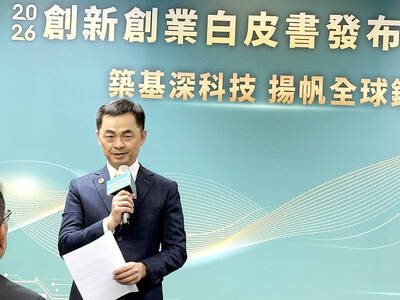Google on Wednesday began making its search engine smarter, in what the Internet giant called a major upgrade that looks beyond query words to figure out what people are actually seeking online.
“Knowledge Graph” technology built to recognize people, places or things signified by keywords took its fledgling steps in the US the hope of eventually extending it to Google searches worldwide.
“The Knowledge Graph is built to understand real things in the world,” said Google fellow Ben Gomes, who has worked on search at the California-based company for more than a decade.
“It is the beginning of a long journey we will be on to cover more topics and more complex queries,” he said.
Gomes envisions Google search being able to eventually answer tricky questions such as where to attend an outdoor Lady Gaga concert in warm weather or the location of an amusement park near a vegetarian restaurant.
For now, people using US Google search in English will start seeing on search pages boxes suggesting what they are interested in finding.
A demonstration showed that searching on the word “Kings” in California, for example, prompted the search engine to point out that one is likely interested in a hockey team, basketball team or film.
Using the keyword “Andromeda” prompted Knowledge Graph to note one might be interested in a galaxy, a television series, or a Swedish rock band.
Clicking on a suggested topic instantly refined search results.
Google painstakingly adjusted its algorithm to comb information from databases such as Freebase and Wikipedia to give context to words and then use general search patterns when it comes to what people tend to want, Gomes said.
Searches on specific subjects such as an architect’s name triggered Knowledge Graph results offering to dive into categories such as biographical information or projects designed.
Google added a serendipity factor by surfacing potentially surprising facts.
For example, a search on “Simpsons” cartoon creator Matt Groening resulted in a Knowledge Graph box that noted his parents and sister have the same first names as his well-know fictional characters — Homer, Margaret and Lisa.

CHIP RACE: Three years of overbroad export controls drove foreign competitors to pursue their own AI chips, and ‘cost US taxpayers billions of dollars,’ Nvidia said China has figured out the US strategy for allowing it to buy Nvidia Corp’s H200s and is rejecting the artificial intelligence (AI) chip in favor of domestically developed semiconductors, White House AI adviser David Sacks said, citing news reports. US President Donald Trump on Monday said that he would allow shipments of Nvidia’s H200 chips to China, part of an administration effort backed by Sacks to challenge Chinese tech champions such as Huawei Technologies Co (華為) by bringing US competition to their home market. On Friday, Sacks signaled that he was uncertain about whether that approach would work. “They’re rejecting our chips,” Sacks

NATIONAL SECURITY: Intel’s testing of ACM tools despite US government control ‘highlights egregious gaps in US technology protection policies,’ a former official said Chipmaker Intel Corp has tested chipmaking tools this year from a toolmaker with deep roots in China and two overseas units that were targeted by US sanctions, according to two sources with direct knowledge of the matter. Intel, which fended off calls for its CEO’s resignation from US President Donald Trump in August over his alleged ties to China, got the tools from ACM Research Inc, a Fremont, California-based producer of chipmaking equipment. Two of ACM’s units, based in Shanghai and South Korea, were among a number of firms barred last year from receiving US technology over claims they have

BARRIERS: Gudeng’s chairman said it was unlikely that the US could replicate Taiwan’s science parks in Arizona, given its strict immigration policies and cultural differences Gudeng Precision Industrial Co (家登), which supplies wafer pods to the world’s major semiconductor firms, yesterday said it is in no rush to set up production in the US due to high costs. The company supplies its customers through a warehouse in Arizona jointly operated by TSS Holdings Ltd (德鑫控股), a joint holding of Gudeng and 17 Taiwanese firms in the semiconductor supply chain, including specialty plastic compounds producer Nytex Composites Co (耐特) and automated material handling system supplier Symtek Automation Asia Co (迅得). While the company has long been exploring the feasibility of setting up production in the US to address

OPTION: Uber said it could provide higher pay for batch trips, if incentives for batching is not removed entirely, as the latter would force it to pass on the costs to consumers Uber Technologies Inc yesterday warned that proposed restrictions on batching orders and minimum wages could prompt a NT$20 delivery fee increase in Taiwan, as lower efficiency would drive up costs. Uber CEO Dara Khosrowshahi made the remarks yesterday during his visit to Taiwan. He is on a multileg trip to the region, which includes stops in South Korea and Japan. His visit coincided the release last month of the Ministry of Labor’s draft bill on the delivery sector, which aims to safeguard delivery workers’ rights and improve their welfare. The ministry set the minimum pay for local food delivery drivers at